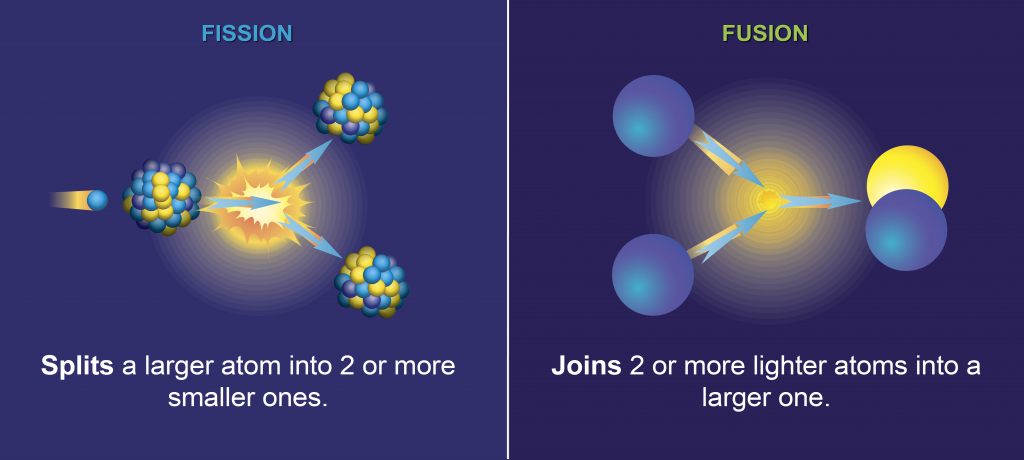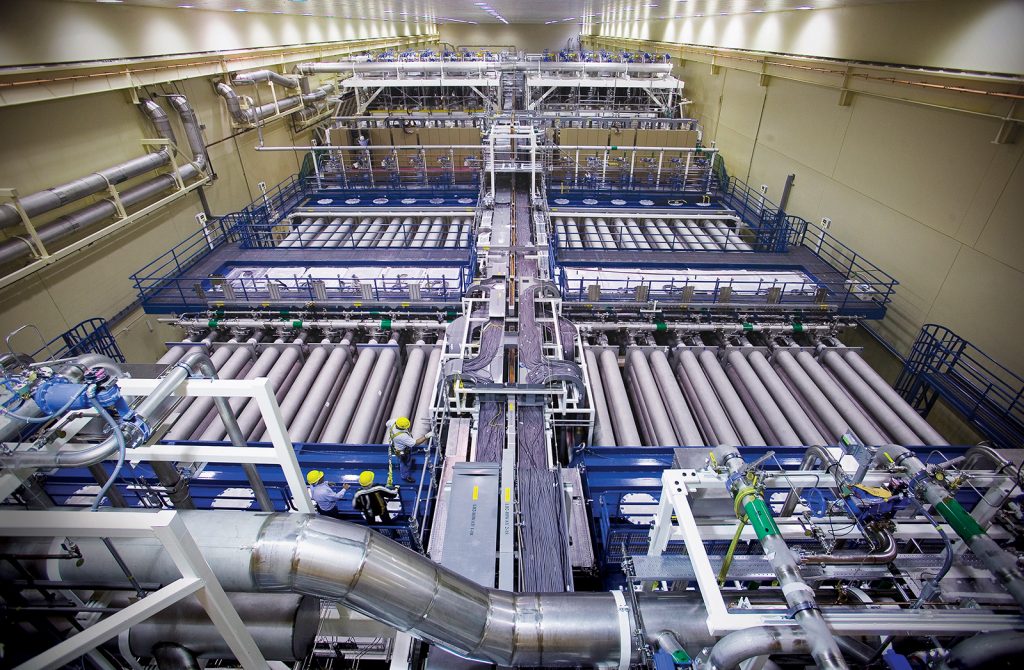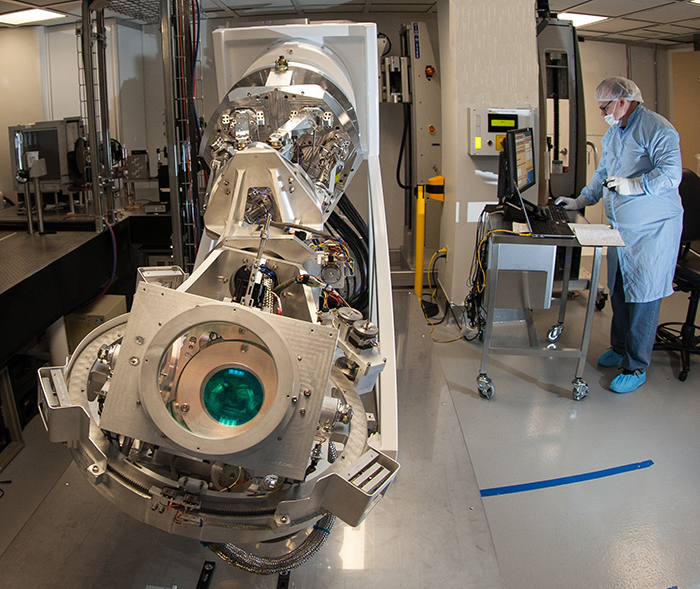Sun on Earth: The New Rise of Fusion Energy Sources
Scientists, technology companies, and the US government are trying to create a new chain reaction in the energy industry. Is it still just theoretical?
On March 17, 2022, the White House convened a summit of government leaders, policymakers, scientists, investors, stakeholders, and private industry to start building a plan for American leadership in commercial fusion energy. The US government has committed billions of dollars to get a working fusion reactor up and running. Andrew Holland, CEO of the Fusion Industry Association, called this time the fusion “Kitty Hawk moment.”
“Not the time when you sell the airplane,” he said, “but the time when the airplane flies.”
Just nine months later, scientists at the Lawrence Livermore National Laboratory announced that their December 5th experiment had been a success: it had produced more energy than it consumed. It marked an exciting turning point in a more than century-long scientific journey, as important as the earliest experiments in nuclear reactions and even the Manhattan Project.
But after more than 70 years of sustained research, it’s worth asking: just how close are we to the power of the stars?
The incredible potential of fusion
All of the energy we produce comes from basic chemical and physical processes. Historically, that’s been accomplished by burning carbon-based material like wood, coal, and gas, or by new ways of generating power from the sun, wind, and water.
It’s increasingly clear how much burning carbon-based materials is affecting the global climate. Alternative energy sources, while developing at an impressive rate, are not yet able to deliver the energy our world needs. But there are other ways.
Nuclear fission involves splitting a large heavy atom into two smaller atoms, causing a chain reaction that releases a tremendous amount of energy–a million times more than carbon-burning methods. This energy heats water into steam, which drives a turbine to produce carbon-free electricity. The challenges for fission include the expense and risk of its radioactive uranium and plutonium fuel.
Fusion, in contrast, involves fusing two light atoms into a single, heavier one, releasing vast amounts of energy in the process. How vast? The fusion of hydrogen atoms into helium is the main process at the heart of our sun, fusing 500 million tons of hydrogen each second and releasing nearly four times the already awesome amounts of energy released by fission reactors, according to the United Nations International Atomic Energy Agency.

Fusion could theoretically produce limitless energy whose only byproduct is helium, an inert gas that is also in short supply. With nuclear fission, which involves the “splitting” of atoms, there’s no risk that a fusion reaction would cascade out of control–any disturbance that cools the burning plasma stops the reaction.
According to the International Energy Agency, the global energy market was worth about $2.4 trillion in 2022. Any power source that shifts the balance of the power grid will fundamentally change it, and reap its rewards.
For most of its history, fusion research has been conducted by government labs. In the US, for example, the US government has spent billions of dollars since 1954, including increasing investment in the international ITER project. And recently, private investment has begun to surge, nearly tripling in 2021 and reaching between $3 and $4 billion in 2022.
Remaining Challenges
Despite the potential, and decades of research, there remain daunting new questions and challenges. This is why the White House Office of Science and Technology Policy and the U.S. Department of Energy announced in April “an agency-wide initiative to accelerate the viability of commercial fusion energy in coordination with the private sector.” They also announced a funding program that awarded $46 million to eight companies working toward pilot-scale fusion plants.
Taken together, the recent news seems good for the near future of fusion. But the history of fusion development has had success in its sights nearly from the beginning, with a 1959 Popular Mechanics article, “Fusion Power for the World of Tomorrow,” predicting: “It may come sooner than you think!” From outright fabrications to the notorious “cold fusion” announcement in 1989, it’s little wonder that the running joke has been that fusion power is always 20 years away. After all, the problems facing would-be commercial fusion plants have always been formidable.
Fuel
Hydrogen fusion requires two heavy isotopes of hydrogen: tritium and deuterium. Deuterium can be extracted from seawater, making it a plentiful fuel source, but there is practically no naturally occurring tritium. Instead, fusion reactors will “breed” tritium by lining the reactor vessel’s wall with sheets of lithium that will react with the neutrons produced by hydrogen fusion.
But the breeding technology has yet to be used at commercial scales, leaving unanswered questions about tritium production and extraction.

Efficiency
Even though the objective is to generate energy, a fusion reaction requires a huge amount of energy to initiate—forcing two positively charged nuclei to overcome the electrostatic force (also called Coulomb force) requires incredible pressures and temperatures of up to 100 million degrees Celsius. And while it’s true the Livermore experiment technically produced a net gain, it took between 300 and 400 megajoules to produce the 2.05-megajoule laser beam. Unfortunately, the National Ignition Facility’s success isn’t a model for commercial fusion.
Ultimately, commercial-scale designs will need to maximize the efficiency of the reaction while minimizing energy leakage.
Safety
Because of the enormously high temperatures required to create burning plasma, even heat-resistant metals would melt on contact. The answer long favored for reactor design is magnetic confinement: holding the electrically charged plasma in a “magnetic bottle” formed by a strong magnetic field. The most popular design, called a tokamak and proposed in the 1950s by Soviet scientists, uses a toroidal (or doughnut-shaped) container. (The National Ignition Facility, on the other hand, uses inertial confinement fusion, which creates ignition by compressing and heating fuel.)
But even in magnetic confinement, the heat produced isn’t uniform. The plasma inside the chamber creates convection currents. The resulting instability acts like mini solar flares, lapping at the sides of the generator’s walls. Beams of high-energy electrons can also bore holes in the reaction-chamber cladding.
Understanding these fluctuations is key to the future of fusion power generation, and involves a host of presently available technologies capable of giving scientists a view into a chamber where instruments would immediately melt.
Spectroscopy conducted with Teledyne Princeton Instruments’ IsoPlane® spectrometers, for example, lets operators indirectly monitor plasma temperature. They’re also able to determine the ratio between deuterium, tritium, hydrogen, and helium, and identify “impurities” in the plasma’s emissions. Infrared detectors like those made by Teledyne Judson can also measure the temperature of tungsten plates in the reactor, and Teledyne Princeton Instruments’ X-ray cameras are able to measure x-ray scattering, all coordinated by high-speed digitizers, like those produced by SP Devices.
Feasibility
After the decades-long march of research, the final barrier to commercial fusion is the same one that stands in the way of most large projects: logistics. Power plants are massive capital projects, and if the timelines of conventional power plants are any indication, it could take a decade or more to complete a full-scale fusion plant.
Some will take advantage of existing logistical connections, like the UK’s STEP (Spherical Tokamak for Energy Production). Set to be built on the site of a former coal power station in northern England, its location already has a cooling water supply and connections to the national grid and railway system.
Companies are also looking at creating smaller, more modular facilities.
What’s changed?
This is why the December 14, 2022 announcement from scientists at the National Ignition Facility (NIF) Lawrence Livermore National Laboratory was so exciting. The NIF is a series building-sized lasers that can superheat fuel pellets until they implode, using 2.05 megajoules of conventional energy to produce 3.15 megajoules of fusion energy.

How close is fusion power?
Despite the Kitty Hawk language, at the moment, this airplane still hasn’t gotten off the ground. And assuming 10 years from a pilot plant to the first commercial reactor, even the most optimistic projections won’t see widespread fusion power taking flight within this decade. What will it take to close the distance? Cooperation, new technologies…and better inspection.
In fact, it’s continuous improvements of the imaging systems and optics of the NIF’s inspection systems that have enabled improvements in the precision and output of their fusion experiments. Specialized X-ray spectrometers measure the power and temperature produced when the world’s largest and highest-energy lasers are fired at the target capsule. This reaction is capable of producing temperatures of more than 3 million degrees Kelvin and pressures of hundreds of billions of Earth atmospheres that implode the capsule and fuse the hydrogen fuel.
Instruments measure the energy produced by the reaction as well as many other characteristics of each implosion: the amount of laser energy that gets coupled to the target; the uniformity of the capsule compression; the amount of capsule ablator/fuel mix; the total fusion energy released; and more. This information is fed to computer models to improve researchers’ understanding of the implosion and inform future experimental designs.
Researchers have to make continual upgrades to the monitoring systems to keep pace with progress.

As the NIF moves forward, there are already shovels in the ground elsewhere. The world’s largest fusion project is the €20bn ($21bn) Iter (International Thermonuclear Experimental Reactor) plant under construction at Cadarache in southern France. And MPEX (The Material Plasma Exposure eXperiment) under construction at Oak Ridge National Laboratory will be capable of producing plasma conditions for materials and components study.
In fact, building a supply chain for this research, and its ultimate goal of generation, could begin now. In its survey of 26 private fusion companies, the US-based Fusion Industry Association, calculated that the supply chain was worth over $500 million in 2022, with the potential to increase to over $7 billion once pilot plants are built. All of which hinge on confidence in a speculative industry. To address the reluctance that prevents suppliers from building the capacity to meet future demand that’s still just potential, the Fusion Industry Association has proposed increased private and public funding, along with “risk-sharing” financing for suppliers to invest in new capacity.
Like the stars that produce fusion power every day, the destination is certainly in sight.



 Bright Light, Big Future: Solar Power on the Rise
Bright Light, Big Future: Solar Power on the Rise  Solar Cell Manufacturing meet Goals
Solar Cell Manufacturing meet Goals 